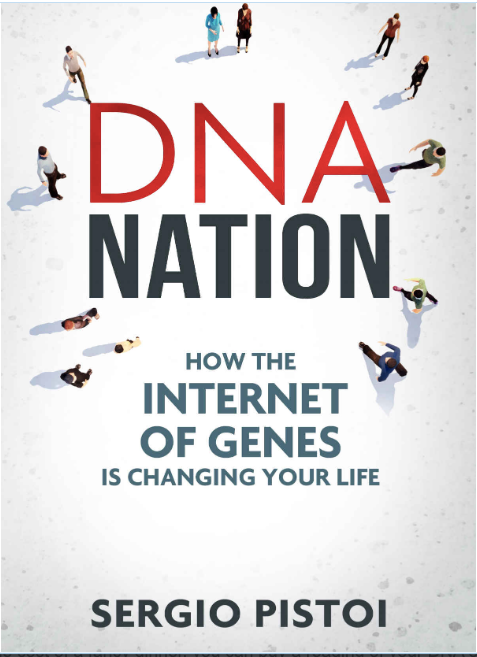
I've long held the obvious view that technology is a two-edged sword, ethically speaking: a knife can be used to cut food (good) or cut people (bad, unless the person wielding the knife is a surgeon) (see my "Guns, Knives, and Pillows" in On Behalf of Humanity: The Technological Edge for more). In Part 3 of the excellent DNA Nation: How the Internet of Genes is Changing Your Lives, Sergio Pistoi looks at some of the dark sides of the revolution in genomics, while keeping his eyes on the astonishing benefits of opening the documents of our DNA that are beginning to come into play.
Pistoi explains that, in contrast to the relatively few deadly diseases (such as Huntington's) which are monogenic or caused by a single harmful mutation, most (including cancers) are multifactorial, "with thick and elaborate plots, where a criminal network of genetic and non-genetic factors conspire to develop the pathology. Think of Breaking Bad, Narcos and The Wire combined – but way more complicated" (p. 121). Although I and no doubt Pistoi loved those series, the upshot for prevention and control of such illnesses is that identification of a complicit gene tells far less than the whole story. Pistoi reports on a man who had what was mostly likely unnecessary extensive prostate surgery, after a suspect genetic mutation was flagged in his DNA.
But Pistoi goes on to detail some of the treasure-trove of benefits of DNA testing that are becoming available so fast that Pistoi may need to update his book on at least a yearly basis. Via "a technique called Pre-implantation Genetic Diagnostic ... embryos are obtained in vitro from the egg and sperm of the couple, and DNA tested to select the ones without the mutation” (pp. 123-4). I still have a book on our shelves called A Fortune in the Junk Pile - about finding valuable antiques in tag sales and flea markets - and Pistoi delves into the value of what was labeled "junk DNA" because it seemed to have no connection to somatic traits. In fact, this DNA is now known to have the crucial "epigenetic" function of regulating the performance of genes, which allows the "reprogramming" of normal adult cells into stem cells (p. 147). (As a science fiction author, I was especially glad to see this redemption of junk DNA - my April 1996 novelette in Analog, "The Copyright Notice Case," situated an ancient copyright in our DNA in the junk DNA we all carry; the story is in my 1999 Bestseller anthology).
And, just for good measure, Pistoi tells us that “Our bodies host ten times more microorganisms than our own cells" and "there is evidence that gut bacteria can protect or predispose us to pathologies ranging from inflammation to diabetes and obesity" (p. 149). I was especially glad to see this, just as with the junk DNA, since my novel The Consciousness Plague hypothesizes that our very consciousness is made possible by communicative bacteria that live in our brains. Outside of the realm of science fiction, Pistoi notes that bacteria and fungi in our biome add an important dimension to our DNA unveiling.
And I'll be back soon with my concluding review of this book which has updated my knowledge of DNA more than anything else I've read in the past twenty years. Its overarching message: no food, no medication, can be deemed to be good or right for you, until it's matched to your DNA, a process which is still in its toddlership.
See also: DNA Nation (Part 1, Chapters 1-5): Reconfiguring Your Human Family ... DNA Nation (Part 2, Chapters 6-13): The Extraordinary Revolution and Its Intrinsic Limitations .... DNA Nation (Part 4, Chapters 18-24, Epilogue): Talkative Cookies
The Consciousness Plague

No comments:
Post a Comment